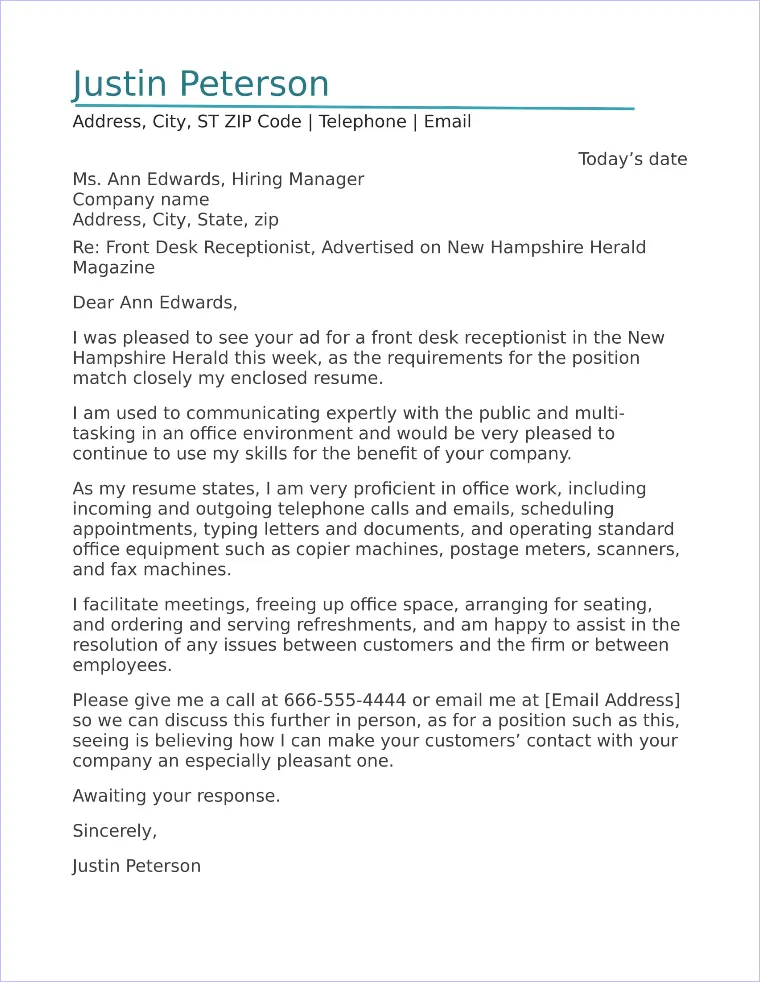Highlighting Your Skills Cover Letter for Front Desk
A front desk position is often the first point of contact for visitors, making the cover letter an essential tool for making a strong first impression. Your cover letter is your opportunity to showcase why you are the perfect candidate for the job. It is more than just a formality; it’s a chance to highlight your relevant skills and experiences. Successfully conveying your abilities can significantly increase your chances of securing an interview. A well-crafted cover letter should be tailored to the specific job and company, demonstrating a clear understanding of the role’s requirements and your ability to meet them. Remember that recruiters and hiring managers often read cover letters before they review resumes, so it is your initial chance to capture their attention. This is your chance to stand out.
Communication Skills Importance for Front Desk
Communication is a cornerstone of any successful front desk professional. Your ability to communicate effectively, both verbally and in writing, is paramount. The cover letter offers a platform to demonstrate your writing proficiency, providing a glimpse into how you will interact with clients, colleagues, and visitors. Emphasize instances where you have used clear, concise, and professional language to convey information or resolve issues. Highlighting active listening skills is equally vital. Mention your ability to understand and respond appropriately to inquiries, complaints, or concerns. Provide examples of how you’ve handled difficult situations with tact and empathy, showing your ability to remain calm under pressure. These skills are crucial for creating a positive first impression and maintaining a smooth operational flow at the front desk. By showcasing your strong communication skills, you illustrate your capability to represent the company professionally and efficiently.
Detail-Oriented Abilities
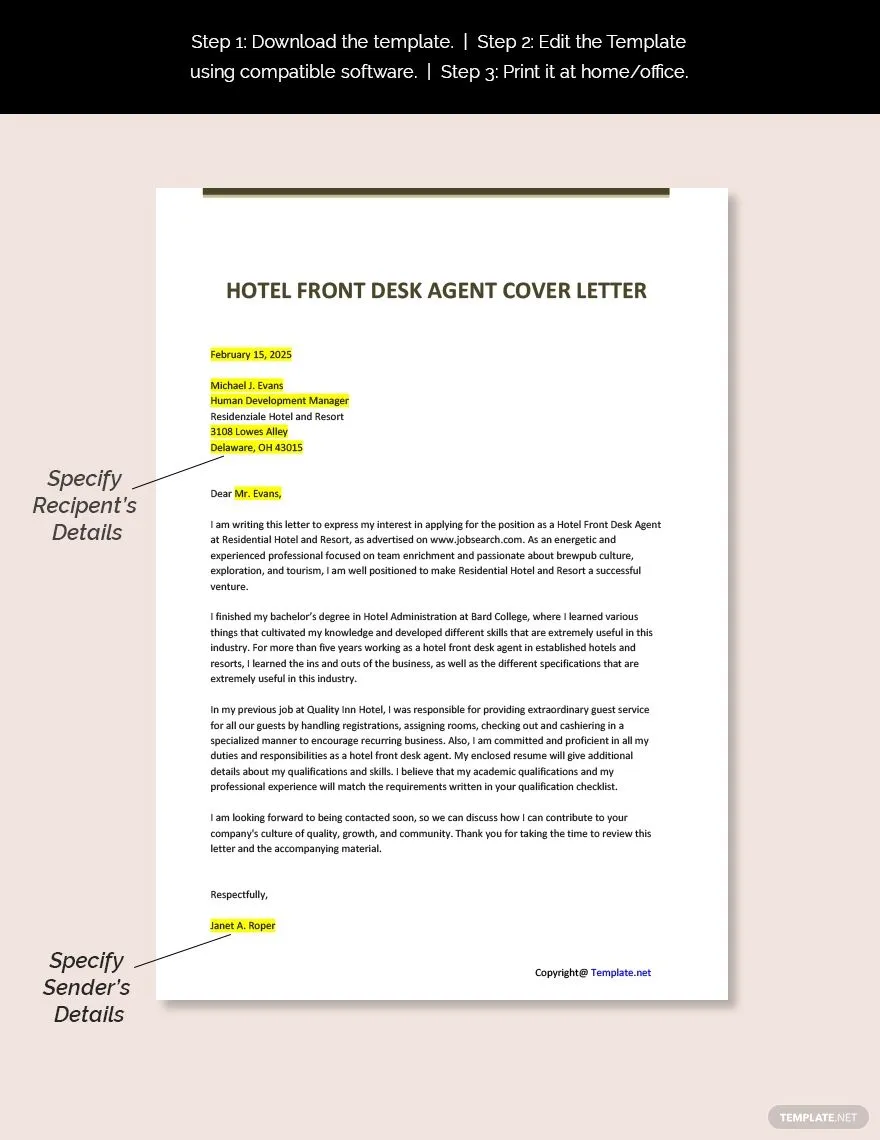
Front desk roles require meticulous attention to detail to handle various tasks like scheduling appointments, managing correspondence, and handling sensitive information. Your cover letter should illustrate your capacity for accuracy. Mention how you have maintained organized records, ensured the proper handling of confidential data, or managed complex calendars. Describe any systems you’ve utilized to stay organized and efficient, showcasing your proactive approach to preventing errors. Providing specific examples of your detail-oriented skills can help distinguish you from other candidates. This might include how you have accurately processed financial transactions, managed inventory, or prepared documents for meetings. Emphasizing your ability to pay close attention to detail will significantly improve your prospects, confirming that you can effectively manage the demands of a front desk position.
Professionalism and Etiquette in Cover Letters
Professionalism and etiquette are crucial aspects of the front desk role. Your cover letter should reflect these qualities to establish credibility. Ensure your letter is polished, free of grammatical errors, and uses a professional tone throughout. Address the hiring manager appropriately, using their title and surname if known. Demonstrate respect for the company and the position by using formal language and avoiding slang or informal expressions. Consider including examples of how you’ve demonstrated professionalism in past roles. You can emphasize your ability to maintain composure in stressful situations, your commitment to discretion, or your adherence to company policies. Showing your ability to maintain a professional demeanor will demonstrate your readiness to represent the company in a positive and appropriate manner. Be sure to show that you can handle yourself with grace.
Formatting Your Cover Letter
The format of your cover letter is important because it affects readability. A clean, organized layout enhances the professional appearance of your application. Select a readable font like Arial or Times New Roman, and use a font size between 11 and 12 points. Use single spacing within paragraphs and double spacing between paragraphs to make it easy for the reader to scan the text. Use clear headings to break up large blocks of text, making the letter easier to navigate. Left-align your text and avoid justifying it, as this can create awkward spacing. Your layout can influence the impression your letter makes. Always remember to proofread the document to ensure consistency and accuracy, which shows respect for the recipient. Maintaining a neat and well-formatted document conveys your attention to detail.
Contact Information

Your contact information should be at the top of your cover letter, making it easy for the employer to contact you. Include your full name, phone number, and email address. You should use a professional-sounding email address that reflects your name; avoid informal nicknames or outdated addresses. Some also include a link to a professional online profile, like LinkedIn, to provide the hiring manager with more information about you. It’s important to ensure that the contact information is accurate and up-to-date, as it’s crucial for potential employers to reach you promptly. Ensure your contact details are easily visible and do not interfere with the content of the cover letter. A clean and easily accessible contact section displays your respect for the company and their time.
Opening Paragraph
The opening paragraph of your cover letter is your first opportunity to make a strong impression. It must immediately capture the hiring manager’s attention. Begin by stating the position you are applying for and how you found the job opening. If you have a personal connection or were referred by someone within the company, mention this briefly. You can state why you are interested in the position and the company. Show enthusiasm and a clear understanding of the company’s goals. This initial section should be concise, typically no more than three or four sentences. The goal is to grab the reader’s interest and encourage them to continue reading the letter. A well-crafted opening paragraph sets the tone for the rest of your application and increases the likelihood of the recruiter continuing to read your cover letter.
Body Paragraphs
The body paragraphs of your cover letter are the core of your application, offering a chance to explain your qualifications and experience in greater detail. Each paragraph should focus on a specific aspect of your skills or experience, supporting your claims with concrete examples. When describing your skills, relate them to the job description. This shows you understand the company’s needs. For experience, focus on your most relevant roles. Use the STAR method – Situation, Task, Action, Result – to demonstrate your achievements. This structured approach helps you present your accomplishments effectively, proving the value you bring to the position. Tailor your language to the job requirements. This targeted approach shows that you have the skills and that you’re the right candidate.
Closing Paragraph
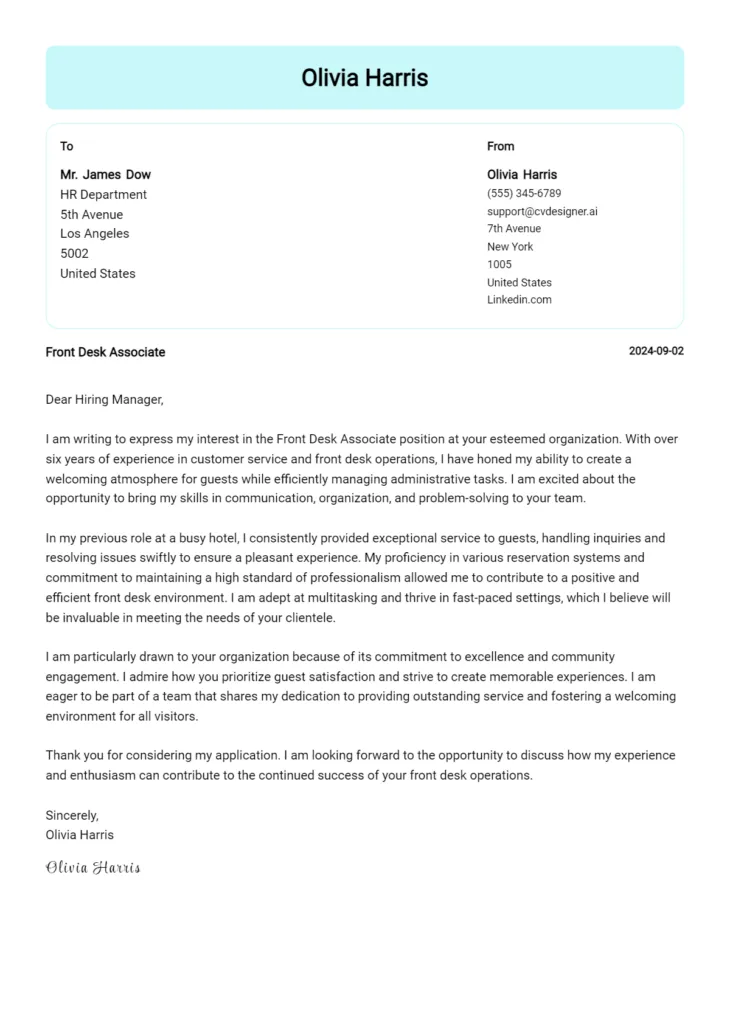
The closing paragraph should summarize your interest in the role and reiterate your enthusiasm. Thank the hiring manager for their time and consideration. Include a call to action, such as expressing your willingness to discuss your qualifications further in an interview or providing your availability. Avoid sounding generic. The closing should be brief and professional. Proofread the entire letter one last time. This confirms that you have conveyed the key points of your application clearly. A well-crafted closing reinforces your enthusiasm and leaves the employer with a positive impression, increasing your chances of moving forward in the hiring process. This paragraph gives your letter a polished finish.
Customizing Your Letter
One size doesn’t fit all when it comes to cover letters. Customizing your letter for each job application is essential. A generic letter will likely be overlooked because it doesn’t show genuine interest or reflect a detailed understanding of the role. Tailor the letter to match the specific job description, ensuring you address the skills, experiences, and qualities the employer is seeking. Use keywords from the job posting to show that you meet the required criteria. Refer to the company’s website and social media platforms. This shows your interest in the role. Customization proves your commitment and increases the chance of being noticed. Your cover letter will then clearly express how you align with the company’s needs. This personalization is key to making a strong impression.
Tailoring to the Job Description
The job description is your guide for writing a cover letter that gets attention. Carefully review the document. Identify the key skills, experiences, and qualifications the employer seeks. Structure your letter to showcase how you meet these requirements. Use the same language and keywords from the job description to ensure your resume and cover letter align. Provide specific examples that prove you possess the stated skills. Highlight any accomplishments or experiences that directly address the employer’s needs. Tailoring your letter to the job description demonstrates your understanding of the role and highlights the value you can bring to the company. This targeted approach significantly increases your chances of securing an interview.
Researching the Company
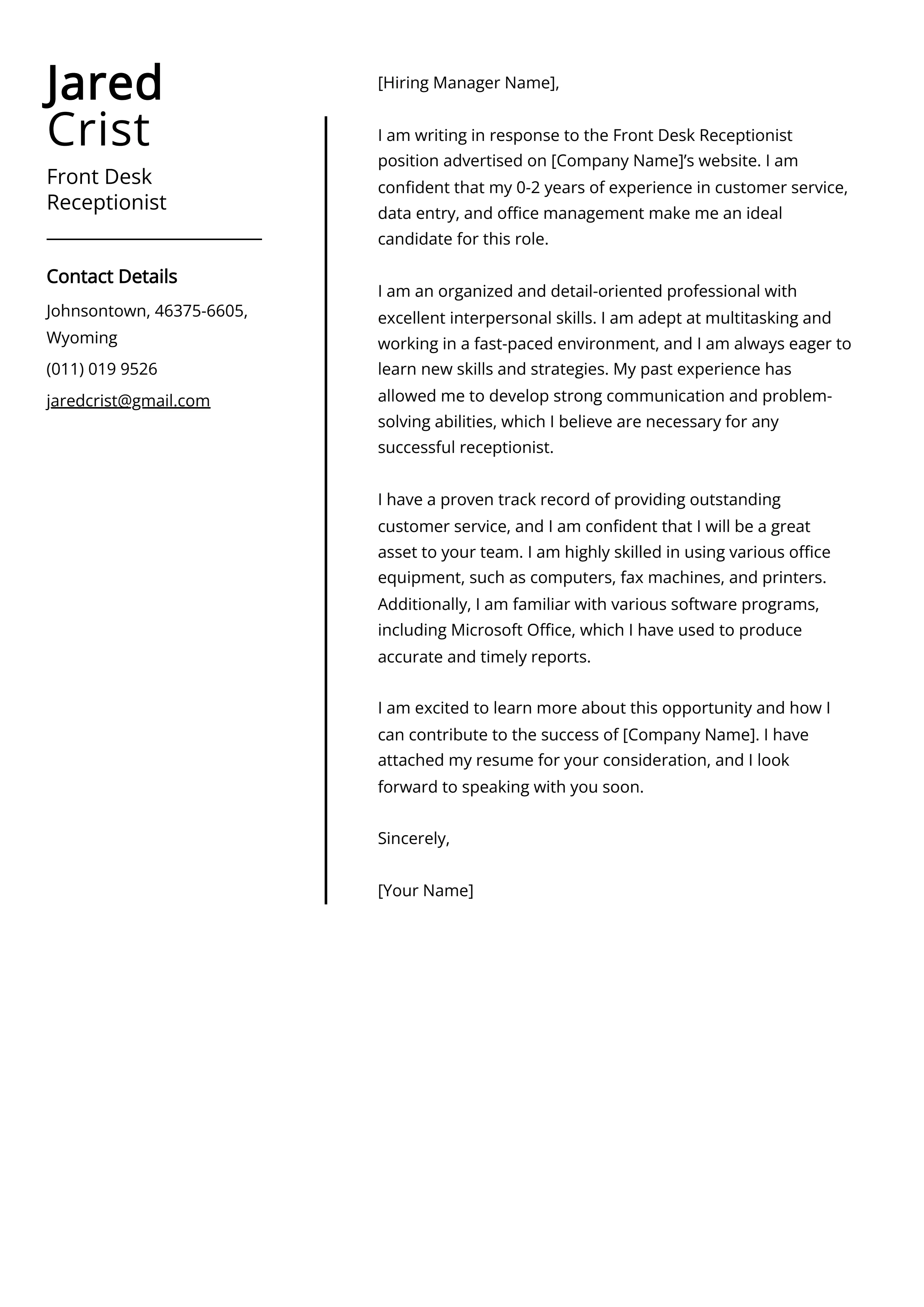
Researching the company is a vital step in customizing your cover letter and demonstrating genuine interest. Visit the company’s website, read their ‘About Us’ section, and review their recent news and projects. This shows that you have taken the initiative to understand their mission, values, and culture. You can incorporate this information into your cover letter. Mention specific aspects of the company that appeal to you or connect with your skills. When you know what the company does, it shows you understand the role. This knowledge helps you tailor your letter. This level of detail can set you apart from other applicants, showing the employer that you have done your homework. Research will help you make your cover letter effective.
Proofreading and Editing
Proofreading and editing are critical steps in ensuring your cover letter is polished and professional. Before submitting your letter, carefully review it for any errors in grammar, spelling, punctuation, and formatting. Typos can make you seem careless. Read your letter aloud to catch any awkward phrasing. Using a spellchecker and grammar checker is helpful, but they should not be the only tools you use. A second pair of eyes can be invaluable. Ask a friend, family member, or career advisor to review your letter, offering valuable feedback. By carefully proofreading and editing your cover letter, you show respect for the employer. A polished letter enhances your credibility and increases your chances of securing an interview. This demonstrates attention to detail.
Reviewing for Errors
Carefully reviewing your cover letter for errors is a crucial step in the application process. It’s easy to overlook mistakes when you’ve spent time writing a letter. Start by checking the basics. Confirm the correct spelling of the hiring manager’s name and the company’s name. Verify that all contact information is accurate. Pay close attention to grammatical accuracy, checking that subject-verb agreement, tense consistency, and sentence structure are correct. Look for any repeated words or phrases that might indicate carelessness. Review the formatting to ensure consistency in font style, size, and spacing. Use a checklist to ensure you have not missed anything. Taking the time to review your letter, minimizes the chances of your cover letter having errors and shows that you have great attention to detail.
Seeking Feedback
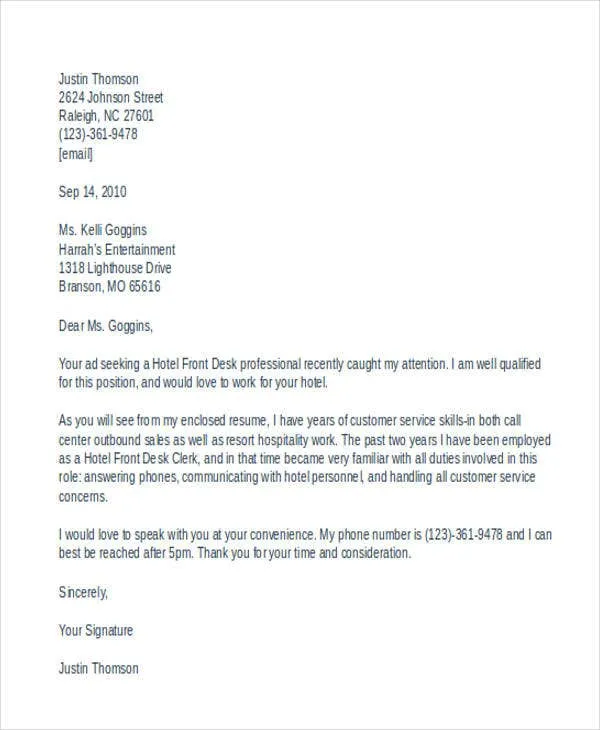
Seeking feedback is an important step in refining your cover letter and improving your application. After you’ve written and edited your cover letter, ask someone you trust to review it. This individual might be a friend, family member, career counselor, or mentor. Ask them to offer constructive criticism on the clarity of your writing, the strength of your arguments, and your overall tone. Seek feedback on whether the letter is easy to read and whether the most important points are highlighted effectively. Consider if the examples are relevant and compelling. Make any necessary revisions based on the feedback you receive. By actively seeking and incorporating feedback, you can make your cover letter a more effective and professional document, increasing your chances of success. A fresh set of eyes can identify weaknesses you may not have noticed.
In conclusion, a well-crafted cover letter is crucial for making a strong first impression and securing a front desk position. By highlighting your skills, tailoring your letter to the job, and paying close attention to detail, you can increase your chances of success. Remember to showcase your communication skills, professionalism, and your ability to handle various tasks efficiently. Take the time to proofread and seek feedback to ensure your cover letter is polished and professional. By following these guidelines, you can create a cover letter that effectively conveys your qualifications and helps you stand out to potential employers. Good luck in your job search!
